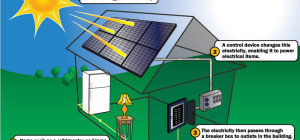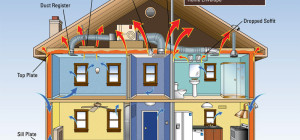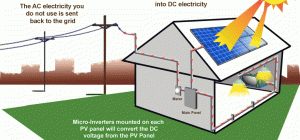 We've all seen it before when shopping for electronics, home appliances, or perhaps even when entering a building - that blue star that proudly proclaims that what you are buying is "energy star certified." Most of us, based on context, have come to figure out that this has something to do with power consumption, but what does that label actually MEAN? Is it just a marketing gimmick or is there something more to it? This guide should help answer questions about what exactly energy star certification is.
We've all seen it before when shopping for electronics, home appliances, or perhaps even when entering a building - that blue star that proudly proclaims that what you are buying is "energy star certified." Most of us, based on context, have come to figure out that this has something to do with power consumption, but what does that label actually MEAN? Is it just a marketing gimmick or is there something more to it? This guide should help answer questions about what exactly energy star certification is.
Who decides what product is Energy Star Certified?
The Energy Star Certification program is managed and regulated by the Environmental Protection Agency. The Energy Star program was enacted in 1992 under the authority granted to them by the Clean Air Act. Since this certification comes from a government agency which doesn't stand to gain or lose anything by granting or withholding the certification, you can trust that the label is genuine.
[youtube https://www.youtube.com/watch?v=HAkN26AeQaA]
How does a product earn Energy Star Certification?
The next question of course is what the energy star certification actually means - what sort of testing has to be passed for a product to earn the label? How efficient does it have to be? What are the limits on energy consumption? Exact numbers vary greatly by product and function: one obviously cannot apply the same energy standards to appliances as varied as home computers, vacuum cleaners, and AC units. But the exact figures are based on certain guiding principles in environmental protection, these principles are:
- The product must contribute significantly to nationwide energy savings
- Performance cannot be sacrificed to reduce energy requirements. It is easy to halve the power requirements of an AC unit if you design a unit that is only half as effective at doing its job.
- In cases where the energy star compliant version is more expensive than a less expensive, conventional counterpart, the savings to consumers in energy costs must make up the difference. Meaning if it costs 200 dollars more for an energy star certified product, using that product vs. using a non-energy star certified product must save the consumer 200 dollars in power bills over a reasonable span of time.
- The energy efficiency is achieved using non-proprietary technologies available through more than one manufacturer. The product isn't just efficient, it's an example of what efficiency can be, and is a model that other manufacturers can reasonably follow in attempting to produce their own energy efficient models.
- It is possible to verify power consumption and performance through third-party testing.
Because of these guiding standards and principles, the consumer can be assured that products with the energy star label will save them money on their energy bills without compromising the performance they demand.
Can a product lose Energy Star Certification?
Yes, it can. The Energy Star Certification has a competitive aspect to it as well. In addition to yearly testing of "off-the-shelf" models of products to account for variations in manufacturing quality, the standards are being constantly revised. If more than half the products in a specific category earn the energy star certification, then the EPA goes back and reviews its standards to ensure that those standards demand the best environmentally friendly technologies in the industry. These standards may also be revised as new technology becomes available to improve energy efficiency, to ensure that the various industries cannot simply "rest on their laurels.”
Can other things be Energy Star Certified?
Yes! Buildings, including new homes and industrial plants, may also be tested for energy star certification. In the case of homes, a checklist of various factors including thermal enclosure, HVAC system quality, and water management is used to ensure a home meets the energy star standards. Those homes that have the energy star certification provide comfort, good air quality, and general durability without requiring sky-high electric bills. Commercial buildings and industrial plants meanwhile, must not only meet general EPA standards, but also pass a benchmark test and score above 75 in this test. The portfolio manager on the Energy Star website allows one to submit an application if their score exceeds 75. The information is filled out by the building owner, but earning the energy star label requires inspection by a third party to verify the claims are true.
[youtube https://www.youtube.com/watch?v=3Y2I9eikJJc]
Conclusion
The Energy Star Certification Program is one of the best metrics consumers can use to verify that the product they are using is energy efficient and will ultimately save them money in the long run. Its emphasis on third-party verification and testing helps to prevent corruption, and assures the consumer that the testing is done free of bias, thus making the energy star label something that has to be earned, and simply isn't branded.
Sources: EnergyStar.gov







